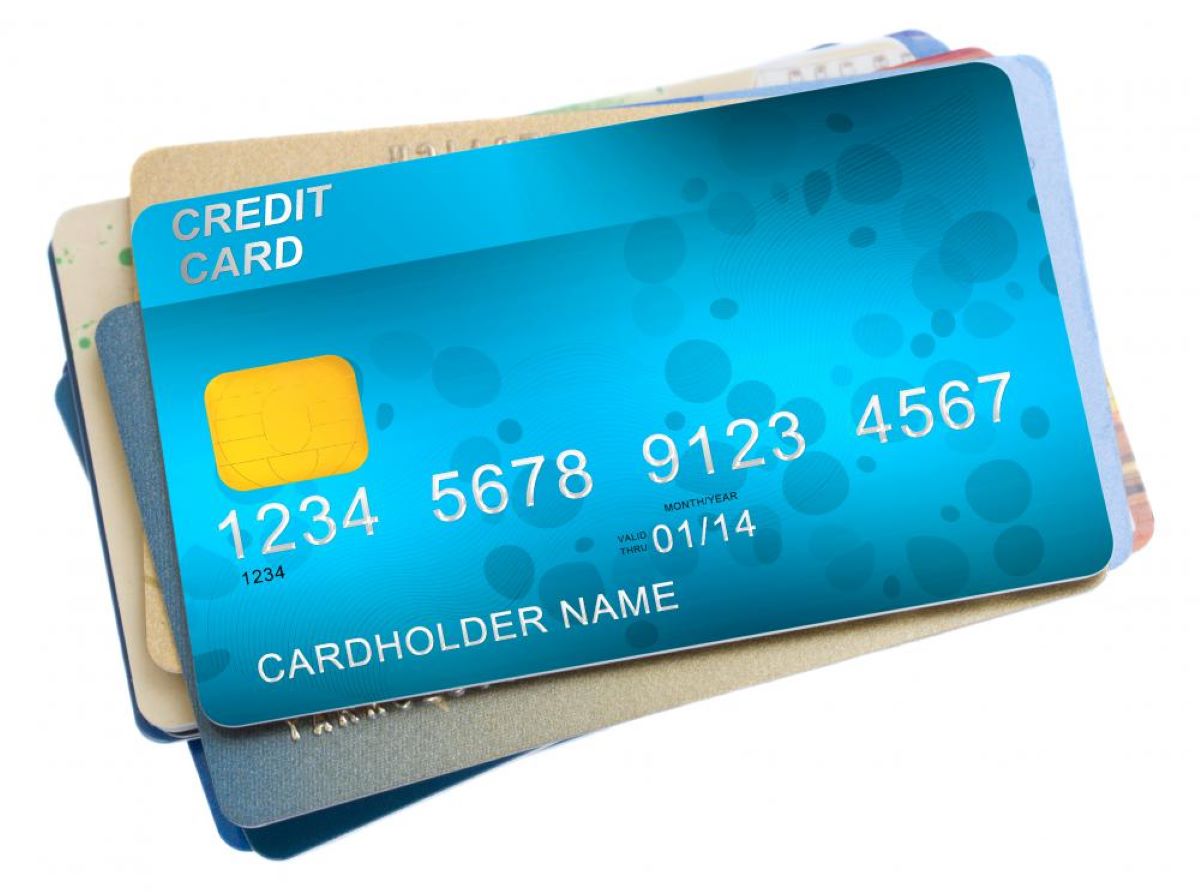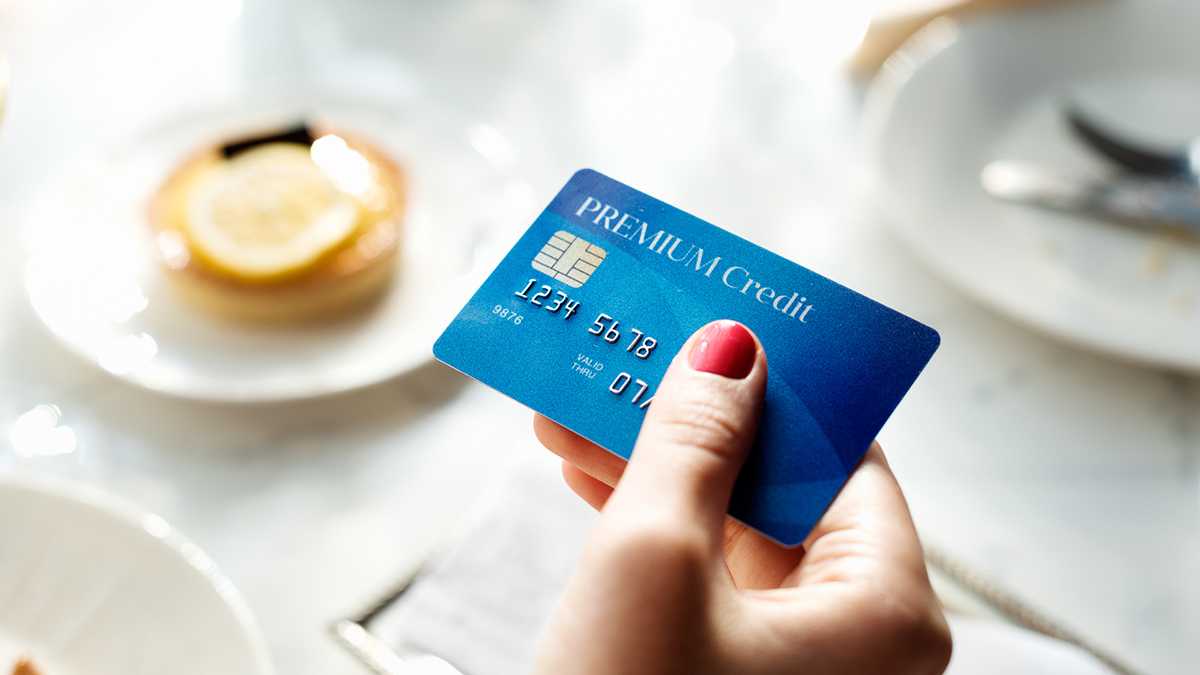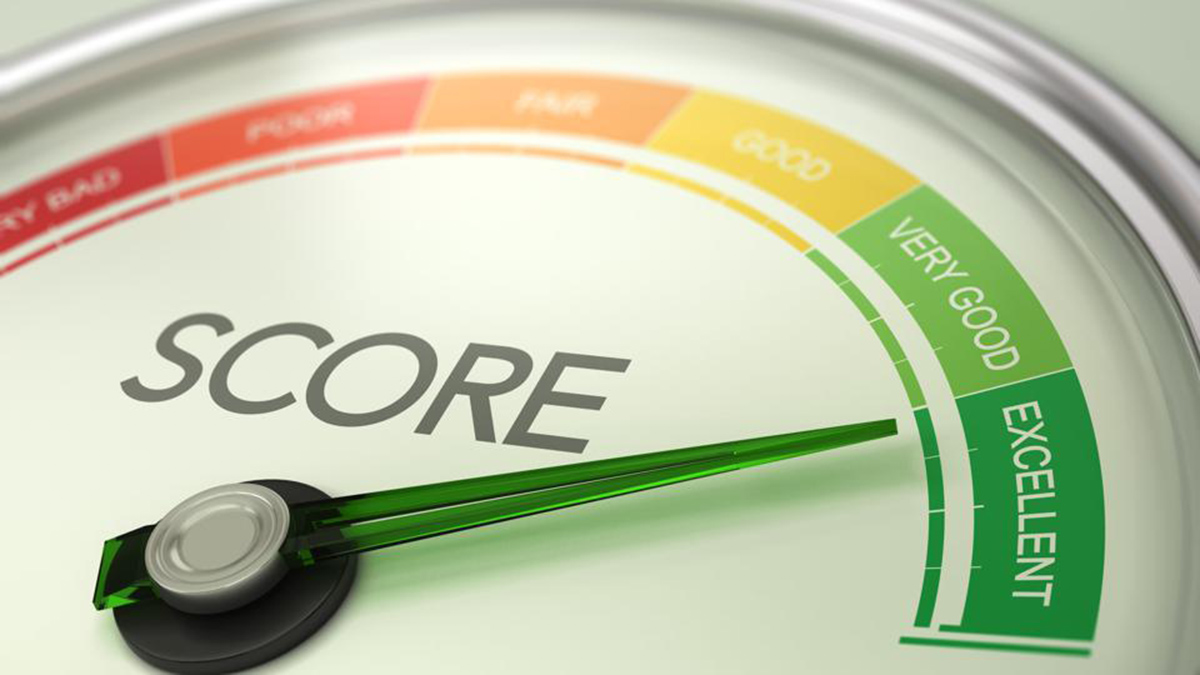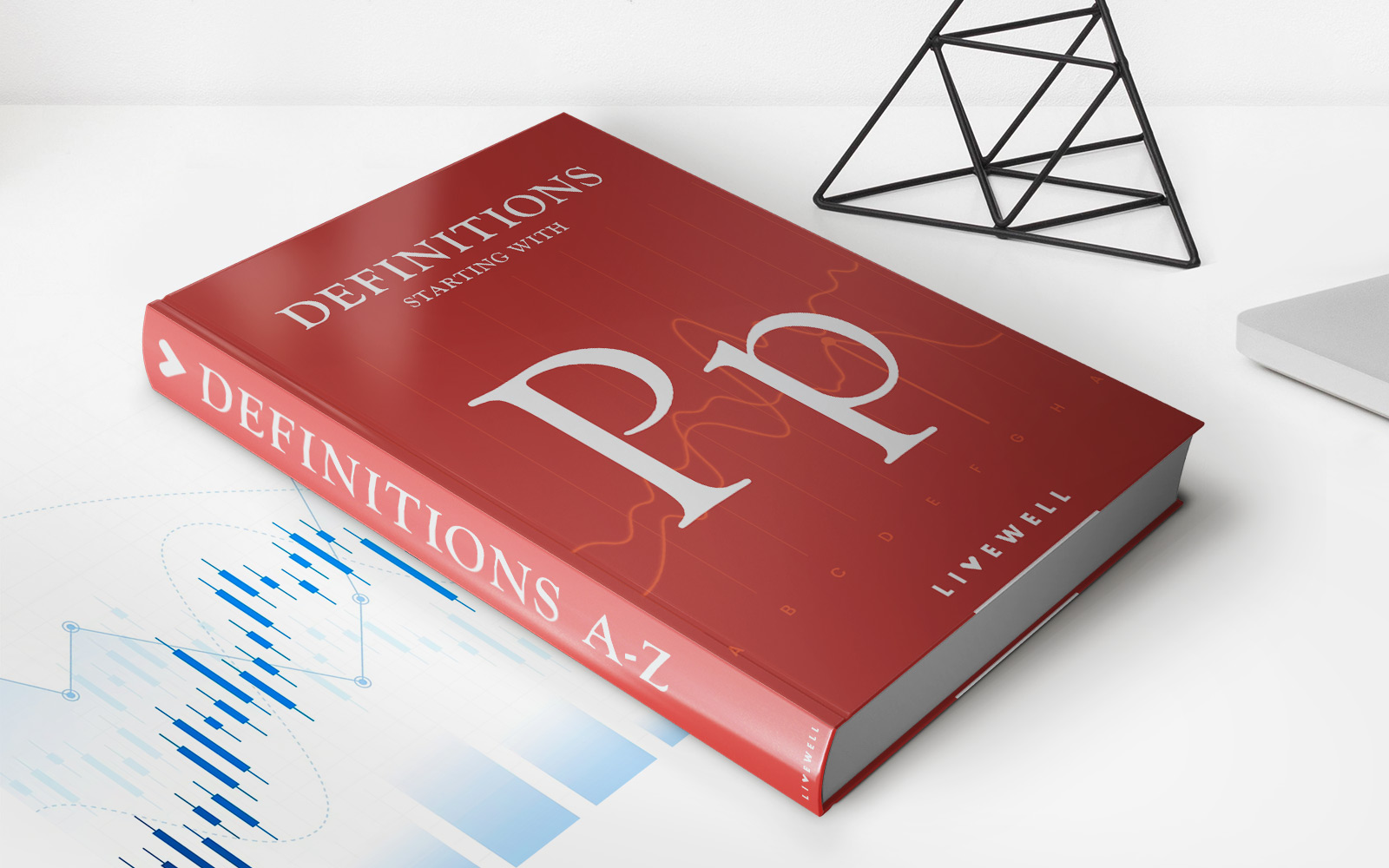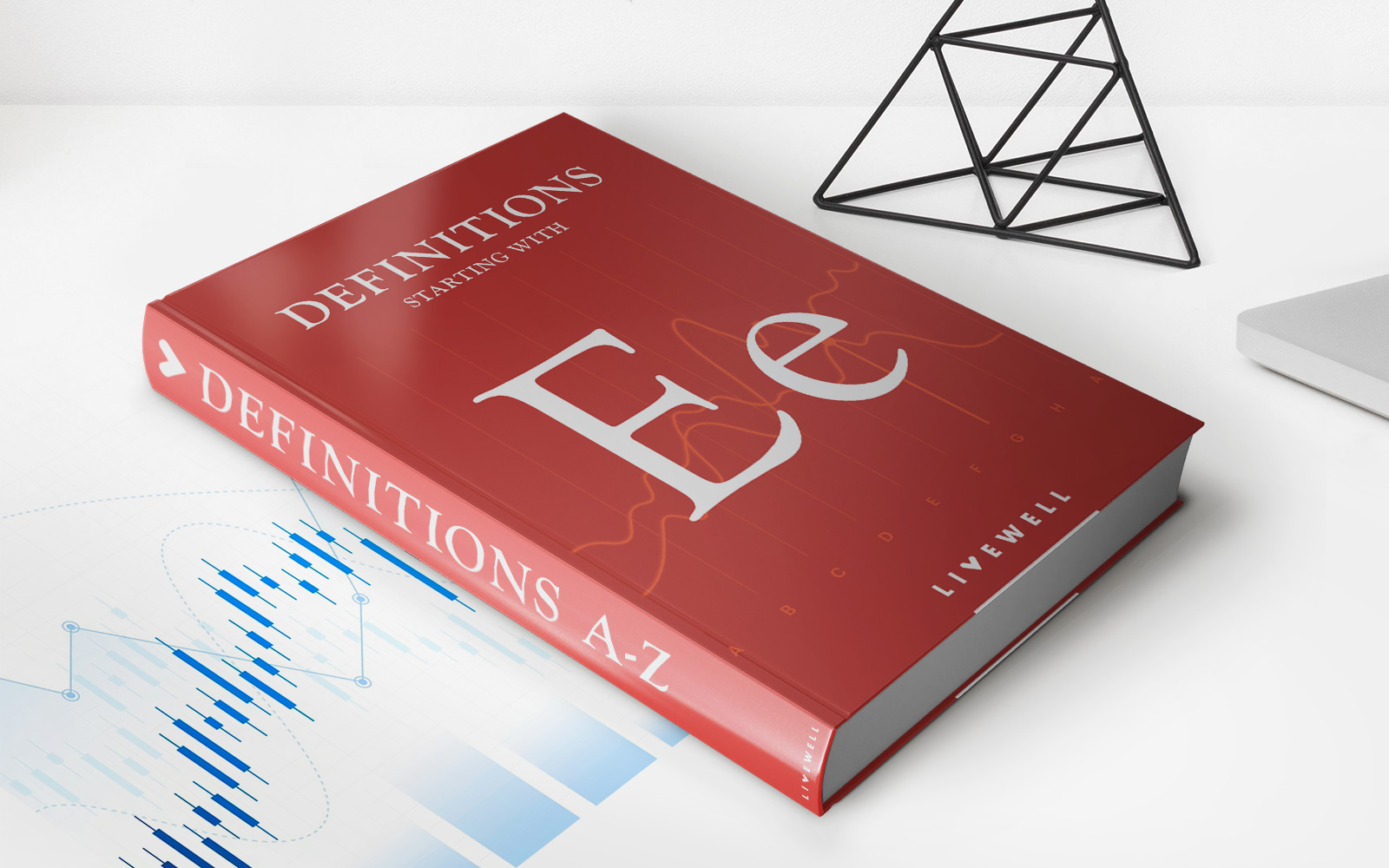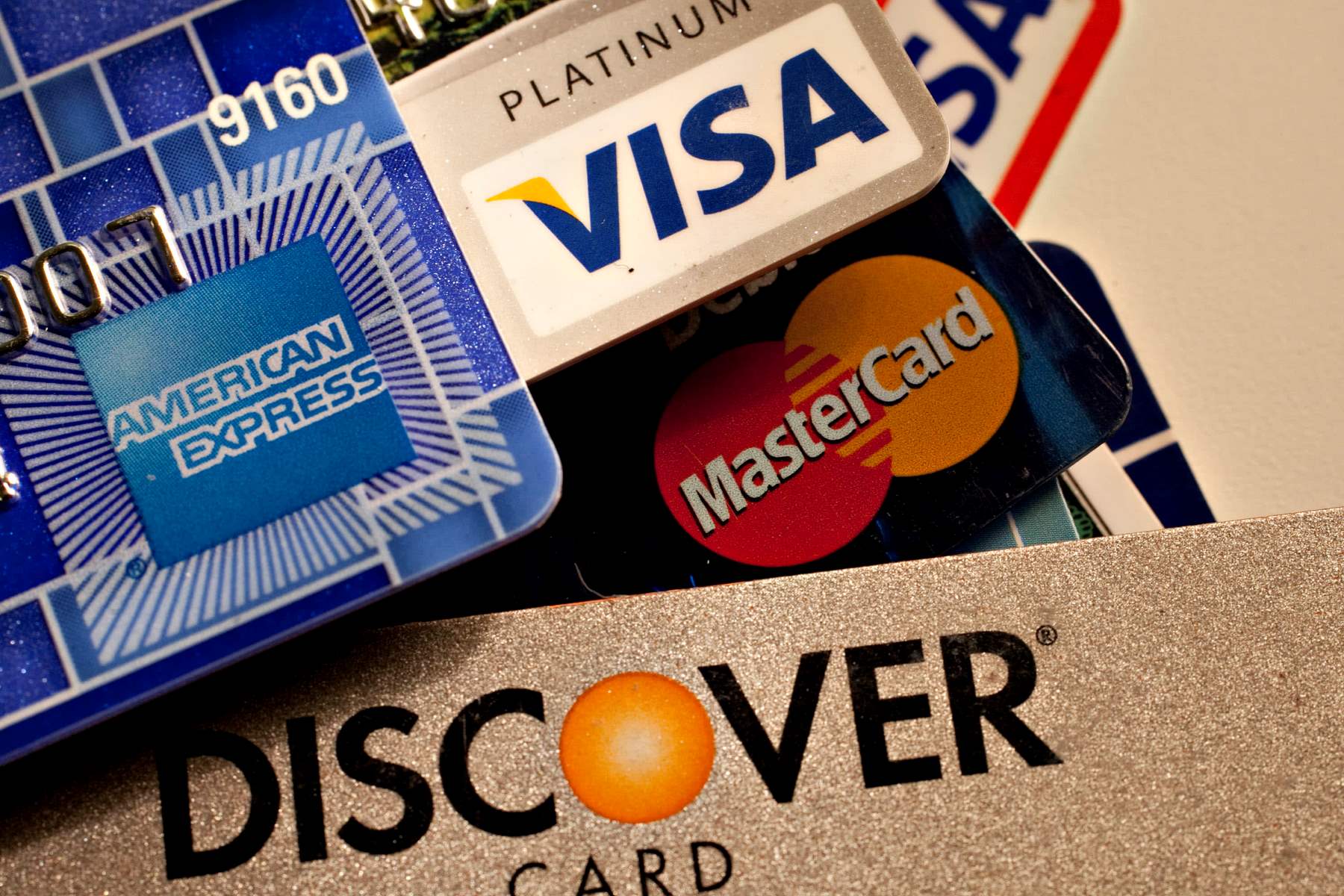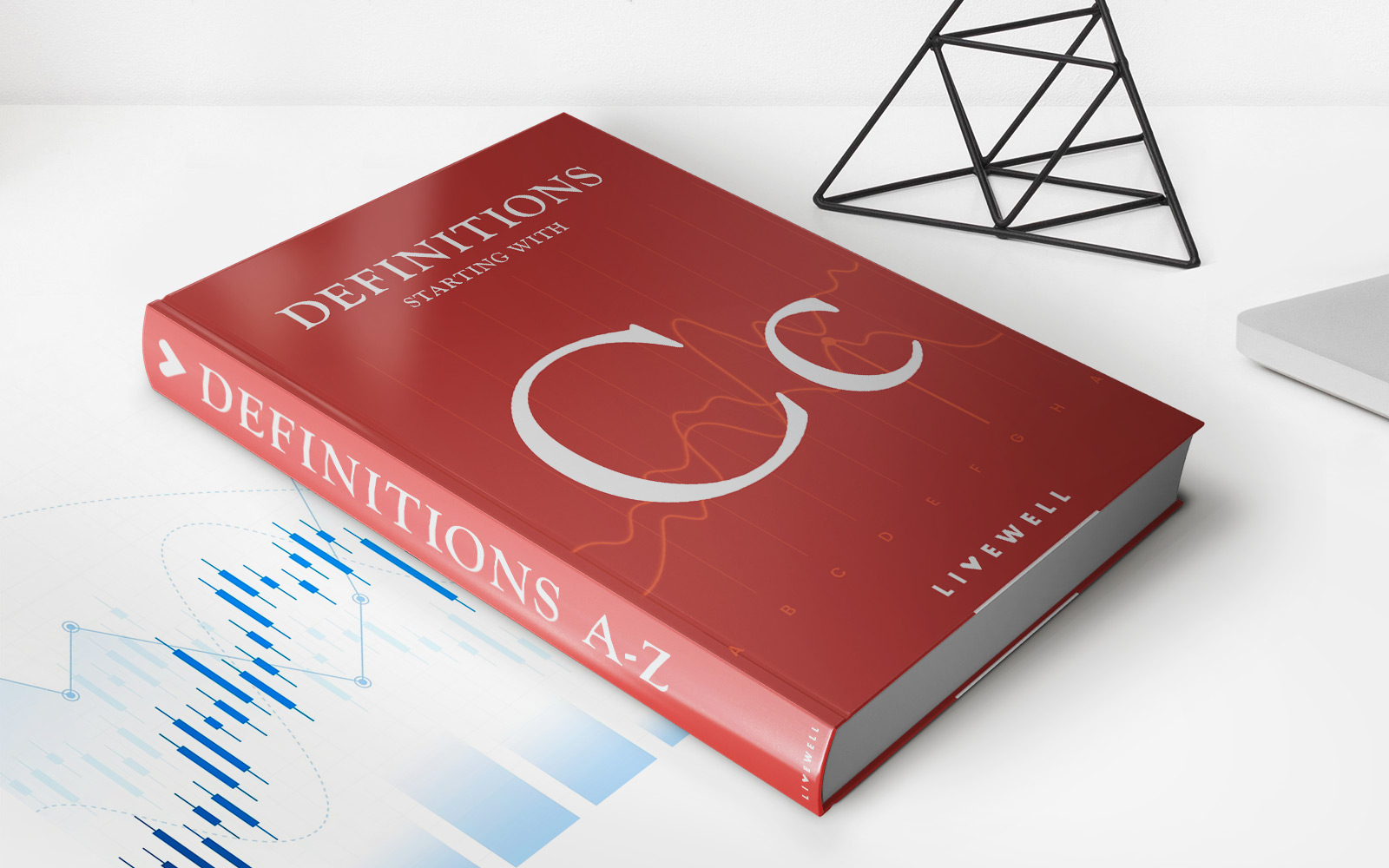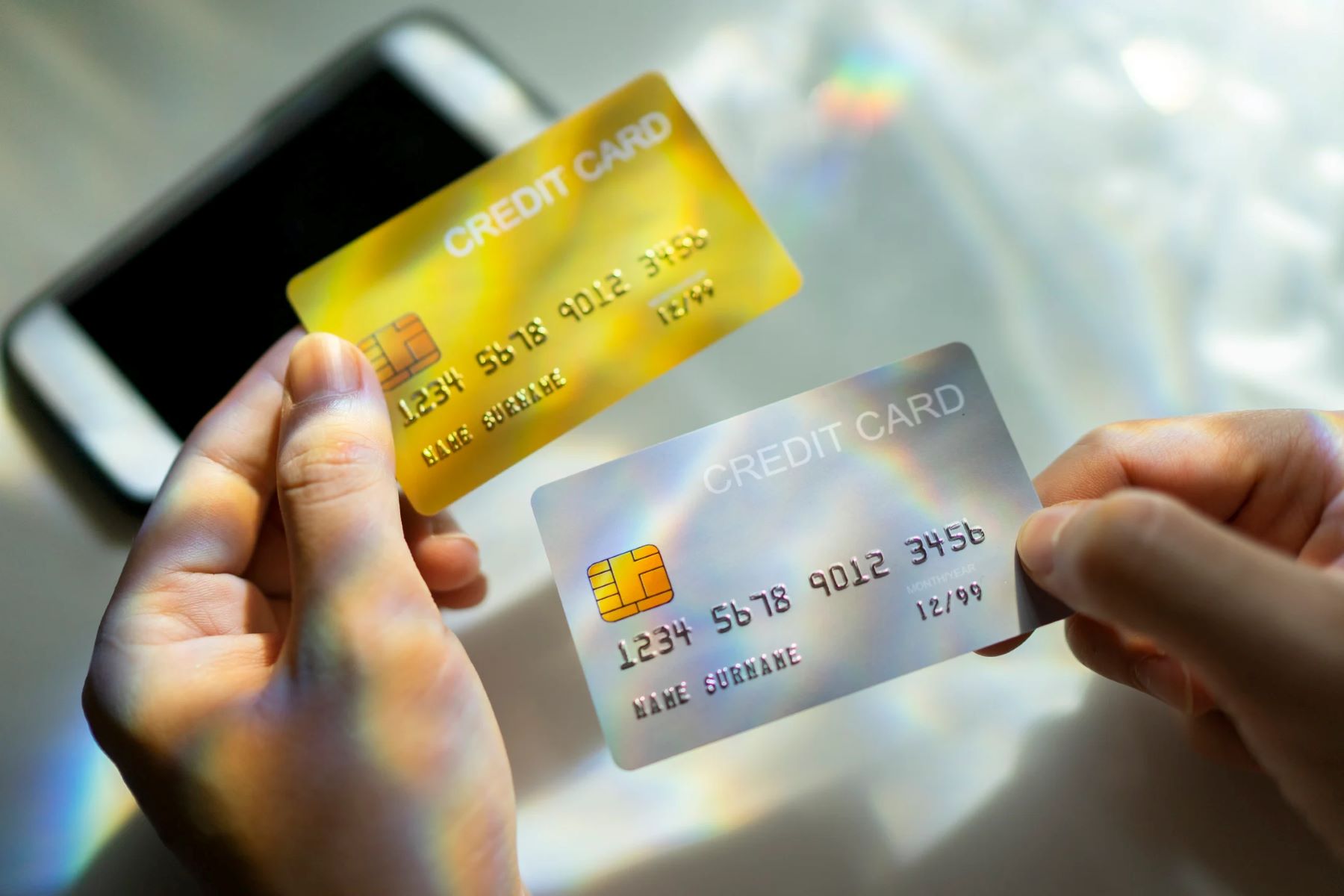

Finance
What Does Cash Limit On Credit Card Mean
Published: October 27, 2023
Looking to understand the meaning of cash limit on your credit card? Learn how this finance term impacts your spending habits and credit card usage.
(Many of the links in this article redirect to a specific reviewed product. Your purchase of these products through affiliate links helps to generate commission for LiveWell, at no extra cost. Learn more)
Table of Contents
- Introduction
- Definition of Cash Limit on Credit Card
- How Cash Limit Differs from Credit Limit
- Reasons for Imposing Cash Limit on Credit Cards
- Benefits of Having a Cash Limit on Credit Cards
- Understanding Cash Advances and Cash Limit
- Factors Affecting Cash Limit on Credit Cards
- Managing Cash Limit on Credit Cards
- Tips for Maximizing Cash Limit on Credit Card
- Conclusion
Introduction
Have you ever wondered what the term “cash limit on a credit card” means? If you’re unfamiliar with this concept, you’re not alone. While most people are familiar with the credit limit on their credit cards, the cash limit is often misunderstood or overlooked.
The cash limit refers to the maximum amount of cash that you can withdraw from an ATM or obtain as a cash advance using your credit card. It is a subset of your overall credit limit and is typically a smaller amount. Understanding how the cash limit works is crucial for responsible credit card use and managing your finances effectively.
In this article, we will delve into the definition of cash limit, how it differs from the credit limit, the reasons behind imposing cash limits, the benefits of having a cash limit, and tips for managing and maximizing your cash limit on a credit card.
Whether you’re a seasoned credit card user or someone who is just starting to explore the world of credit, this article will provide you with valuable insights into the concept of cash limits on credit cards and how they can impact your financial decisions.
Definition of Cash Limit on Credit Card
The cash limit on a credit card refers to the maximum amount of cash that you can withdraw from an ATM or obtain as a cash advance using your credit card. It is a subset of your overall credit limit, which is the total amount of money that you can borrow on your credit card.
Unlike the credit limit, which can be used for various types of purchases, the cash limit is specifically designated for cash transactions. This means that you can withdraw cash from an ATM or receive cash from a bank using your credit card, up to the cash limit set by your credit card issuer.
It’s important to note that the cash limit is typically lower than the credit limit. For example, if your credit card has a total credit limit of $10,000, the cash limit might be set at $1,000 or 10% of the credit limit. The exact cash limit will depend on factors such as your creditworthiness, income, and credit card issuer’s policies.
It’s essential to be mindful of your cash limit because exceeding it can result in additional fees and higher interest rates. If you try to withdraw more cash than your cash limit allows, your transaction may be declined, or you may be charged a fee for going over your limit.
Understanding the cash limit on your credit card is crucial, as it helps you make informed decisions about how and when to use your card for cash transactions. It’s a good idea to check your credit card statement regularly to be aware of your cash limit and any changes made to it by your credit card issuer.
How Cash Limit Differs from Credit Limit
While the terms “cash limit” and “credit limit” may sound similar, there are crucial differences between the two. Understanding these differences is important for effectively managing your credit card usage.
The credit limit, also known as the spending limit, is the total amount of money that you can borrow on your credit card. It represents the maximum outstanding balance that you can carry on your card at any given time. The credit limit determines how much you can charge to your credit card for purchases, whether it’s for everyday expenses or larger purchases.
On the other hand, the cash limit is a subset of the credit limit, specifically designated for cash transactions. It represents the maximum amount of cash that you can withdraw from an ATM or obtain as a cash advance using your credit card. Unlike the credit limit, which can be used for a wide range of purchases, the cash limit is specifically earmarked for cash transactions.
The cash limit is typically set lower than the credit limit. This is because cash transactions are considered riskier by credit card issuers, as there is no purchase protection or merchant verification involved. The lower cash limit helps mitigate the risk by limiting the amount of cash that can be accessed through a credit card.
It’s important to note that using your credit card for cash transactions, such as withdrawing cash from an ATM, may attract additional fees and higher interest rates compared to regular purchases. These fees and rates are often higher than those applied to purchases made using the credit limit. Therefore, it’s generally advisable to use cash advances sparingly and for emergency situations.
Another key difference between the cash limit and credit limit is how they are utilized. While the credit limit can be utilized for various types of purchases, including online shopping, dining out, or paying bills, the cash limit is specifically limited to cash transactions. This means that you cannot use the cash limit for regular purchases or online transactions; it can only be used for withdrawing cash or obtaining cash advances.
Understanding the distinction between the cash limit and credit limit is crucial for responsible credit card usage. It helps you make informed decisions about how and when to use your credit card for cash transactions, and allows you to manage your finances effectively while avoiding unnecessary fees or penalties.
Reasons for Imposing Cash Limit on Credit Cards
There are several reasons why credit card issuers impose cash limits on credit cards. These reasons are designed to protect both the cardholders and the credit card companies themselves. Let’s take a look at some of the primary reasons behind the imposition of cash limits:
1. Mitigating risk: Cash transactions pose a higher risk for credit card companies compared to regular purchases. When you use your credit card to withdraw cash or obtain cash advances, there is no merchant verification or purchase protection in place. This increases the risk of fraud or misuse of the credit card. By imposing a cash limit, credit card companies can limit the potential losses associated with cash transactions.
2. Managing credit card debt: Cash advances on credit cards can lead to higher levels of debt. Unlike purchases made using the credit limit, cash advances often come with higher interest rates and additional fees. By setting a lower cash limit, credit card companies aim to encourage responsible credit card usage and deter cardholders from relying too heavily on cash advances.
3. Compliance with regulations: Cash transactions have stricter regulations compared to other credit card transactions. Credit card companies must comply with anti-money laundering and anti-terrorism financing regulations, which include monitoring cash transactions. By imposing cash limits, credit card companies can more easily track and monitor cash advances, ensuring compliance and preventing illicit activities.
4. Encouraging regular spending: Credit card companies earn revenue from the fees charged to merchants for each transaction. By setting a lower cash limit, credit card companies encourage cardholders to use their credit cards for regular purchases instead of relying on cash advances. This ensures that credit card companies can generate income from transaction fees while minimizing the risks associated with cash transactions.
5. Protecting credit cardholders: Setting a cash limit helps protect cardholders from potential financial harm. Cash advances typically come with higher interest rates and additional fees, which can lead to increased debt and financial burdens. By setting a cash limit, credit card companies aim to prevent cardholders from getting into excessive debt and facing long-term financial difficulties.
Understanding the reasons behind the imposition of a cash limit on credit cards can help cardholders make informed decisions about their credit card usage. It encourages responsible spending, protects against rising debt, and ensures compliance with regulations, benefiting both credit cardholders and credit card companies.
Benefits of Having a Cash Limit on Credit Cards
While some credit card users may see the cash limit as a restriction, there are actually several benefits to having a cash limit on your credit card. Understanding these benefits can help you make the most out of your credit card usage. Here are some advantages of having a cash limit:
1. Enhanced control over spending: The cash limit helps you exercise better control over your spending habits. By setting a specific limit for cash transactions, it encourages you to think twice before using your credit card for cash withdrawals or cash advances. This can prevent impulsive spending and the accumulation of unnecessary debt.
2. Convenient access to emergency funds: Despite the need for caution, having a cash limit on your credit card can provide a safety net during emergencies. If you find yourself in a situation where you urgently need cash, such as a medical emergency or unexpected travel expenses, the cash limit on your credit card allows you to access funds quickly and conveniently.
3. Online shopping alternative: While the cash limit is primarily intended for cash transactions, it can also be beneficial when making online purchases. In certain situations where other payment methods may not be acceptable or available, you can use your credit card’s cash limit to obtain a cash advance and then use those funds for online shopping.
4. Building credit history: Responsible usage of the cash limit can help you build a positive credit history. By withdrawing cash or obtaining cash advances and consistently repaying the amount on time, you demonstrate your ability to manage credit effectively. This can reflect positively on your credit report and contribute to a healthier credit score.
5. Avoiding high interest rates on other loans: In some cases, using the cash limit on your credit card to obtain cash may be more affordable than taking out a personal loan or using other high-interest borrowing methods. While interest rates on cash advances are typically higher than regular credit card purchases, they may still be more favorable compared to other loan options.
It’s important to remember that while the cash limit on your credit card can provide benefits, it should be used judiciously. Regularly exceeding your cash limit or relying solely on cash advances can lead to financial strain and increased debt. It’s crucial to have a repayment plan in place and use the cash limit responsibly to avoid excessive fees and interest charges.
By understanding the advantages of having a cash limit on your credit card and utilizing it wisely, you can make more informed financial decisions and effectively manage your credit card usage.
Understanding Cash Advances and Cash Limit
When it comes to credit card usage, it’s important to have a clear understanding of cash advances and how they relate to the cash limit on your credit card. Let’s delve into the concept of cash advances and how they are connected to your cash limit:
A cash advance is a service offered by credit card issuers that allows cardholders to withdraw cash from an ATM or receive cash directly from a bank or financial institution using their credit card. This cash is then added to the cardholder’s outstanding balance and is subject to interest charges and additional fees.
The cash limit on your credit card plays a significant role in determining the maximum amount of cash that you can obtain as a cash advance. While the cash limit may differ from the credit limit, it operates within the confines of the credit limit. For example, if your credit limit is $5,000 and your cash limit is $1,000, you can use your credit card for cash advances up to a maximum of $1,000.
It’s essential to note that cash advances usually come with higher interest rates compared to regular credit card purchases. Additionally, they may incur additional fees, such as ATM fees or cash advance fees, which are charged by the credit card issuer.
Understanding these potential costs associated with cash advances is crucial for responsible credit card usage. Cash advances should be used sparingly, ideally for emergency situations when no other payment options are available.
It’s also important to be aware of the payment terms associated with cash advances. Unlike regular credit card purchases, which typically offer an interest-free grace period, interest on cash advances starts accruing immediately from the date of the transaction. This means that you’ll be charged interest on the cash advance amount from day one, making it essential to repay the cash advance as soon as possible to minimize interest charges.
Furthermore, it’s crucial to understand that the repayment of a credit card balance is typically applied to the balances with the lowest interest rates first. Therefore, if you have a cash advance balance and a regular purchase balance, any payments you make will usually go towards paying off the regular purchase balance first, keeping the higher-interest cash advance balance intact for a longer period of time.
By familiarizing yourself with the concept of cash advances and their relationship to the cash limit on your credit card, you can make informed decisions about when and how to use cash advances. It’s advisable to use cash advances sparingly, repay them promptly, and consider alternative payment methods whenever possible to minimize interest charges and fees.
Factors Affecting Cash Limit on Credit Cards
The cash limit on your credit card is determined by several factors, which can vary from one cardholder to another. Understanding these factors can help you better manage your credit card usage and make informed financial decisions. Here are some key factors that can affect the cash limit on credit cards:
1. Creditworthiness: Your creditworthiness plays a crucial role in determining your cash limit. Credit card issuers assess your creditworthiness based on factors such as your credit score, credit history, and overall financial standing. If you have a good credit score and a positive credit history, you may be eligible for a higher cash limit. On the other hand, if your credit score is low or you have a history of late payments or defaults, your cash limit may be lower.
2. Income: Your income is another factor that can influence your cash limit. Credit card issuers consider your income level to assess your ability to repay borrowed funds. If you have a higher income, you may be eligible for a higher cash limit as it indicates a greater capacity to manage credit responsibly. Conversely, if your income is lower, your cash limit may be set accordingly to mitigate the risk of excessive debt.
3. Credit Card Type: The type of credit card you hold can affect your cash limit. Different credit cards, such as basic cards, rewards cards, or premium cards, often come with varying cash limits. Premium cards typically offer higher cash limits due to their enhanced features and higher creditworthiness requirements.
4. Existing Credit Card Balances: If you have outstanding balances on your credit card, it can impact your cash limit. Credit card issuers consider the overall debt you carry when determining your cash limit. If you have significant balances on your credit card, it may result in a lower cash limit to prevent further borrowing and to maintain manageable levels of debt.
5. Relationship with the Credit Card Issuer: Your relationship with the credit card issuer can also influence the cash limit on your credit card. If you have a long-standing, positive relationship with the issuer, they may be more inclined to offer a higher cash limit. On the other hand, if you are a new customer or have had issues with the issuer in the past, it may impact your cash limit initially.
6. Economic Factors and Market Conditions: External factors such as economic conditions, market trends, and changes in the lending industry can also impact cash limits. During times of economic uncertainty or recession, credit card issuers may exercise more caution and reduce cash limits to mitigate financial risks.
It’s important to note that the specific weightage and consideration given to each factor can vary among credit card issuers. Additionally, credit card issuers have their own proprietary algorithms and criteria for determining cash limits, making it challenging to understand exactly how each factor is weighed.
By being aware of the factors that can influence your cash limit, you can focus on maintaining a good credit score, managing your debt responsibly, and maintaining a positive relationship with your credit card issuer. This can increase your chances of having a higher cash limit and better access to credit when you need it.
Managing Cash Limit on Credit Cards
Effectively managing the cash limit on your credit card is crucial for responsible credit card usage and maintaining financial stability. Here are some tips to help you manage your cash limit effectively:
1. Understand your cash limit: Familiarize yourself with the specific cash limit on your credit card. Review your credit card statement or contact your credit card issuer to confirm the exact amount. Knowing your cash limit helps you make informed decisions about how and when to use your credit card for cash transactions.
2. Track your cash advances: Keep track of the cash advances you make on your credit card. Regularly review your credit card statement to monitor the outstanding balance and any associated fees or interest charges. Being aware of your cash advances helps you stay on top of your spending and avoid exceeding your cash limit.
3. Use cash advances sparingly: Cash advances on credit cards often come with higher interest rates and additional fees compared to regular purchases. Therefore, it’s advisable to use cash advances sparingly and only when necessary. Explore alternative payment options or consider using your credit card directly for purchases whenever possible to avoid incurring the higher costs of cash advances.
4. Repay cash advances promptly: Pay off your cash advances as soon as possible to minimize interest charges. Unlike regular credit card purchases, which often have an interest-free grace period, interest on cash advances starts accruing immediately. By repaying your cash advances promptly, you can minimize interest charges and keep your overall debt under control.
5. Monitor your overall credit utilization: It’s important to keep an eye on your overall credit utilization, which is the percentage of your credit limit that you are currently using. Using a large portion of your credit limit, including your cash limit, could negatively impact your credit score. Aim to keep your credit utilization ratio below 30% to maintain a healthy credit profile.
6. Avoid exceeding your cash limit: Be mindful of your cash limit and avoid exceeding it. Exceeding your cash limit can result in declined transactions or additional fees. If you find that you frequently need to withdraw cash or rely on cash advances, consider requesting a higher cash limit from your credit card issuer or exploring other financial options that may better suit your needs.
7. Communicate with your credit card issuer: If you have any concerns about your cash limit or need a temporary increase for a specific reason, such as travel or emergency expenses, consider reaching out to your credit card issuer. They may be able to provide guidance or make adjustments to your cash limit based on your circumstances.
By managing your cash limit effectively, you can make the most out of your credit card usage while maintaining control over your finances. Strive to use cash advances judiciously, monitor your spending habits, and stay proactive in communicating with your credit card issuer to ensure a positive credit card experience.
Tips for Maximizing Cash Limit on Credit Card
If you want to maximize the cash limit on your credit card, there are some strategies you can employ to increase your available funds. Here are some tips to help you make the most of your cash limit:
1. Maintain a good credit score: Your credit score plays a significant role in determining your cash limit. To maximize your cash limit, focus on maintaining a good credit score by making timely payments, keeping your credit utilization low, and avoiding defaults or late payments. A higher credit score reflects lower credit risk, making you more eligible for a higher cash limit.
2. Increase your income: Your income level can also impact your cash limit. If you have a steady source of income, consider options to increase your earning potential, such as taking up a side job or finding ways to boost your primary income. A higher income can demonstrate financial stability and make you more eligible for a higher cash limit.
3. Request a cash limit increase: If you have a good repayment history and improved financial circumstances, it’s worth considering requesting a cash limit increase from your credit card issuer. Contact them and provide updated financial information to support your request. However, remember that a higher cash limit also comes with increased responsibility, so be mindful of your spending habits and repayment abilities.
4. Pay off outstanding balances: Clearing your outstanding balances on your credit card can free up your available credit and potentially increase your cash limit. By reducing your overall debt, you demonstrate responsible credit management and create more room for a higher cash limit.
5. Explore premium credit card options: Premium credit cards often come with higher cash limits due to their enhanced features and creditworthiness requirements. If you meet the eligibility criteria and can handle the associated fees and charges, consider upgrading your credit card to a premium option to enjoy a higher cash limit.
6. Use your credit card responsibly: Using your credit card responsibly by making regular payments, avoiding maxing out your credit limit, and following good credit practices can not only maintain your current cash limit but also increase your chances of future limit increases.
7. Monitor and manage your credit utilization: Credit utilization, which is the percentage of your credit limit that you’re currently using, can impact your cash limit. Aim to keep your credit utilization ratio below 30% to demonstrate responsible credit usage. By managing your credit utilization, you can maintain a positive credit profile and potentially increase your cash limit in the long run.
Remember, it’s important to use the cash limit on your credit card responsibly and within your means. Taking on too much debt can lead to financial difficulties and negatively impact your creditworthiness. Always assess your financial situation and only use your credit card for cash transactions when necessary. By following these tips, you can maximize your cash limit while maintaining good financial well-being.
Conclusion
Understanding the cash limit on your credit card is essential for responsible credit card usage and effective financial management. While the cash limit may be lower than the credit limit, it serves a specific purpose in allowing cash transactions through your credit card.
In this article, we explored the definition of the cash limit, how it differs from the credit limit, the reasons behind its imposition, and the benefits of having a cash limit on your credit card. We also discussed the concept of cash advances, factors that can affect the cash limit, and offered tips for managing and maximizing your cash limit.
By understanding your cash limit, you can make informed decisions about how and when to use your credit card for cash transactions. It’s important to use cash advances sparingly, repay them promptly, and explore alternative payment options whenever possible. Managing your cash limit responsibly helps maintain control over your finances, avoid excessive fees or interest charges, and build a positive credit history.
Remember to regularly monitor your credit card statement, keep your credit utilization low, and maintain a good credit score. By following these practices, you can potentially increase your cash limit over time and enjoy the benefits of more accessible funds when you need them.
As you navigate the world of credit cards, keep in mind that responsible credit card usage goes beyond just understanding the cash limit. Always practice financial discipline, spend within your means, and pay off your credit card balances on time to maintain a healthy financial standing.
With this knowledge in hand, you are equipped to make informed financial decisions, manage your cash limit effectively, and make the most out of your credit card usage.


